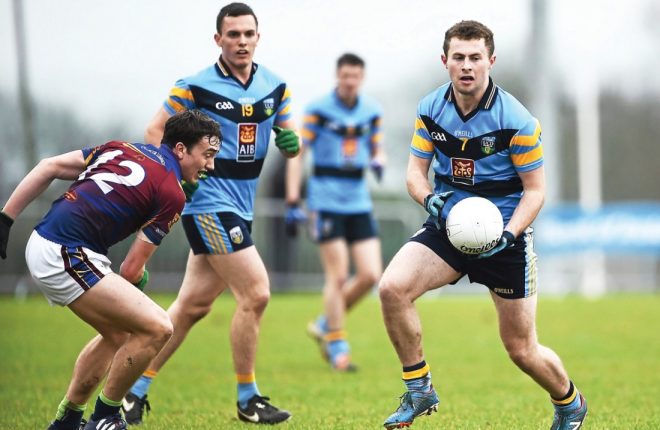
Dublin’s Jack McCaffrey has excellent decision making
This column was originally published on June 16.
In 2015 Jack McCaffrey, from inside his own 45, soloed forward to the edge of Donegal’s large square to volley a superb goal to the net for a Dublin goal in the National League.
His action was an example of a game principle that I use for players which evolves as follows: ‘Look, See, Decide, Act’.
Jack looked around him beforehand (scanning the pitch) which altered his memory of similar situations trained or from past game experiences and from the ‘picture exemplars’ raised in his brain. He was able to see the potential of a long solo forward. He decided (chose) one option and acted on it to produce that memorable goal.
While watching Chelsea play Bournemouth, Fabregas’s visionary pass to Willian ended with a brililantly crafted and clinically finished goal.
The TV commentator summed up the moment with Fabregas sees the movement and delivers (decides and acts) effectively.
Another example of ‘Look, See, Decide, Act’ – essentially the process of decision making. That process, as McCaffrey and Fabregas decided, has three parts:
(i) Deliberate Focus (attention);
(ii) Anticipation (weighing up the options);
(iii) Memory (the pictures habitually created from training and games).
Thus everything that happens in sport/life begins with a decision, ie, ‘Thinking’ and ‘deciding’ becomes action becomes behaviour (is action repeated several times) becomes habit (is behaviour repeated often).
Some believe excellent decision makers are born.
In most cases, effective decision making comes from many hours of deliberate practice. So, coaches should try to maximise decision-making opportunities in their coaching, inside and outside (eg, one-to-one clinics) of formal coaching sessions. As coach, try these suggestions to use to stimulate decision-making:
1. Involve players by empowering them to develop creative training activities, eg, dividing players into groups. Ask each group to devise ‘new’ restart routines, etc. When playing in-house games have each group use their routines on the other team and all assess how well they’ve worked. The coach has to provide a ‘new’ routine as well. I call this idea of building ‘new’ set pieces routines as ‘Swap Shop’. Remind players that their ideas can be better than yours as coach. Every new idea helps your team to play better.
2. Create training sessions that put players in unfamiliar situations so they have to develop solutions to the problems posed. For example, the ‘Close the Door’ game has an opposition defender/midfielder break through the middle at 50m out and heading straight for your goals. Each player must have a defence plan for this situation. The team talks through the plan, then walks it through, and then finally run the game to see how well the ‘solution’ worked. I often use a number of my game principles, eg, ‘Vision’, ‘First touch’, ‘On the run’, ‘Give before Hit’ with the whistle blown for a foul if a player breaks the principle. That player is told ‘Deal with it’ meaning ‘fix it’ the next time that situation arises.
3. Create situations where players have to negotiate the actions of opponents – Rather than using static markers, use players who move around to create continually changing situations that require a range of decisions be made. Sometimes I use the game ‘Weaker/Stronger’. Two teams are announced on Monday for an in-house game on Wednesday. Each player will have an opposition ‘man to mark’. Between Monday and the Wednesday game, player A assesses how he can negate his opponent’s strengths, and force him to play to his weaknesses when he’s on the ball. When A is on the ball, B does the same. So it’s a game of discovering each other’s strengths and weaknesses. On Saturday in a team meeting individually and collectively the squad talks out how each player played for each of his two roles in the game. In meetings, use ‘What if?’ or ‘As if’ questioning to predict opponents; actions.
4. Encourage players to question each other and provide feedback on their performance. One effective way to promote this is weekly appraisal, where players appraise themselves on a series of performance indicators agreed by the team. Coaches will appraise each player also and then coach and player perform an ‘assessment’ on each player. Pairs of players, who play the same role should also engage in the same type of ‘assessment’ exercise.
Receive quality journalism wherever you are, on any device. Keep up to date from the comfort of your own home with a digital subscription.
Any time | Any place | Anywhere











